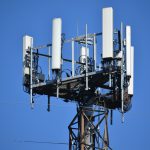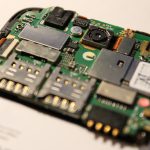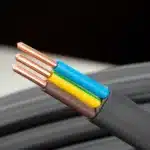
Introduction
Sensor networks have greatly revolutionised our surroundings, especially in the realm of IoT (Internet of Things), by providing valuable insights and enabling smart decision-making. They serve as the eyes and ears of interconnected systems, enhancing connectivity and data flow. This article illustrates various aspects of integrating sensor networks with the fascinating world of IoT, exploring their significance, applications, and future developments.
What are Sensor Networks?
They comprise interconnected sensors that collect data from different environments and transmit it to a central system for storage, display, analysis, and actions. Sensors within these networks can detect various parameters such as temperature, humidity, pressure, motion, light, and pollutants. These spatially distributed sensors can record physical or environmental conditions. These include temperature, sound, pressure, humidity, etc., depending on the sensor types and environments. These integral, autonomous sensors communicate with each other wirelessly and are highly scalable. They often operate on battery power and consume less energy, making them ideal for both indoor and outdoor environments.
Fundamental Components
A typical sensor network consists of the following main components:
- Sensors: Sensors are critical devices that detect and measure different events or changes in the environment, including temperature, humidity, pressure, motion, and light.
- Communication Infrastructure: It is the network that facilitates data transfer between sensors and the central processing unit.
- Gateways: Gateways act as bridges between sensor nodes and the network.
- Processing Units: These are units designed to analyse the collected data and make decisions based on pre-defined algorithms.
- Power Sources: Power sources provide the necessary power to all modules. These typically include batteries or energy-harvesting mechanisms that power the sensors and communication devices.
The Role of Sensor Networks in IoT Development
They form the backbone of IoT by providing the necessary data inputs (raw data) for intelligent decision-making and automation. The integration of these components with IoT platforms enables seamless information flow that enhances efficiency, improves safety, and optimises resource management. Such components fuel the intelligence and functionality of IoT solutions by providing foundational data from different environments.
The Synergy of Sensor Networks and IoT
The combination of sensor networks and the IoT represents a transformative development in technology, enabling enhanced data collection, processing, and automation across various sectors. It creates an ecosystem where data from multiple sensors is seamlessly integrated, analysed, and utilised for decision-making and automation. This amalgamation results in enabling smarter cities, industries, homes, and, overall, a more connected world.
Technologies Enabling Sensor Networks
There are multiple technologies that play significant roles in the functionality and enhancement of these devices, driving innovations and applications. Some of the common technologies include:
Wireless Sensor Networks (WSNs)
WSNs employ wireless communication protocols such as Zigbee, Bluetooth, or Wi-Fi to enable seamless connectivity between sensors. These networks are characterised by low power consumption and scalability.
Edge Computing
Edge computing is increasingly integrated into sensor networks to alleviate the burden on centralised systems and reduce latency. These devices are equipped with processing capabilities, perform initial data analysis and filtering. Transmitting only relevant information to the central system enhances real-time responsiveness and reduces bandwidth requirements.
Cloud Integration
Cloud computing plays a vital role in these elements by providing scalable storage and computational resources for data processing and analysis. By offloading computational tasks to the cloud, sensor networks can handle large volumes of data. Additionally, they leverage advanced analytics algorithms to extract actionable insights.
Broad Range Applications of Sensor Networks in IoT
They are integral to various IoT applications, including:
- Smart Homes – In smart homes, sensor networks monitor and control lighting, heating, security systems, and appliances to enhance comfort and efficiency.
- Healthcare – Wearable sensors can track vital signs in healthcare settings, including heart rate, glucose levels, and blood pressure, providing real-time health monitoring and alerts.
- Agriculture – Sensors measure soil moisture, temperature, and humidity, enabling precision farming techniques that optimise crop yield and resource usage.
- Industrial Automation – Sensor networks oversee machinery operation, detect faults, and predict maintenance needs, thereby increasing efficiency and reducing downtime.
- Environmental Monitoring – Sensors can provide valuable data about multiple environmental factors. They can collect data on air quality, water quality, and weather conditions, aiding in pollution control and disaster management.
The Future Landscape of Sensor Networks in IoT Development
The future of such components looks promising, with advancements in AI, 5G, and edge computing poised to revolutionise their capabilities. The rollout of 5G networks promises faster data speeds, lower latency, and greater network capacity, empowering sensor networks to deliver richer multimedia experiences and support mission-critical applications.
Final Thoughts
Sensor networks are the backbone of IoT, enabling smart, connected environments that improve our quality of life. Further advancements in technology will enhance the capabilities and efficiency of these sensors, paving the way for a more interconnected future. As IoT development progresses, sensor networks will undoubtedly play an even more critical role in shaping the world around us.





















